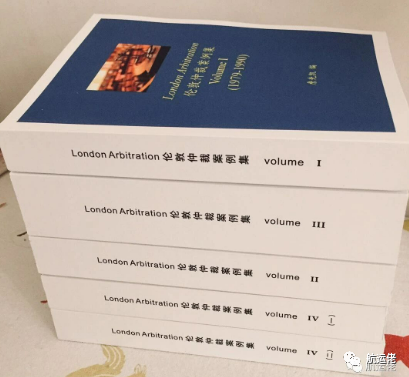在London Arbitration 1/21案中,涉及到船东的滞期费索赔是否超时效的问题。该租船合同为修改的Asbatankvoy格式,从意大利热那亚装载1/2等级的脂肪酸甲酯到同样在意大利的Santa Panagia港卸。航次完成后,船东主张197,598.13美元的滞期费。承租人认为,索赔受时效限制的,法庭应予以驳回。

图片来源网络仅供示意
该租船合同附加的第24条规定如下:
“A. Charterer shall be discharged and released from all liability in respect of any claim Owners may have against Charterers under this Charter Party unless a claim has been received byCharterers in writing with supporting documents within ninety (90) days of thecompletion of discharge of the cargo concerned under this Charter Party. Anyclaim which Owners may have under this Charter Party shall be deemed to be waived and absolutely barred, if such claim, together with all supporting documents is not received by Charterers within the agreed time bar.
B. Insofar as demurrage claims are concerned the supporting documents to be received by Charterers must include a Laytime and Demurrage calculation issued in accordance with the allowances and exceptions provided in this Charter Party. Owners’ invoice, Notices of Readiness and Statements of Factsi ssued at loading and discharging ports, duly signed in accordance with Clause17 above. If other Time Sheets or Statements of Facts are separately issued forother cargoes handled at the same port or berth, these documents should also be attached to Owners Laytime and Demurrage calculation.”
Discharge was completed on 9 January. On 31 January the charterersreceived the owners’ demurrage claim via the broking channel. The 90-day periodexpired on 9 April.
船东提供了了如下文件辅助其滞期索赔。
1. Owners’ time sheet dated 31January.
2. Notice of readiness, Genoa.
3. Statement of facts, Genoa.
4. Time log for Genoa dated 20 December.
5. Loading rate request dated 19 December.
6. Letter of protest for lowloading rate.
7. Notice of readiness, Santa Panagia.
8. Statement of facts, Santa Panagia, issued by agents.
9. Statement of facts, Santa Panagia, issued by the owners.
10. Statement of facts, Santa Panagia, issued by the receivers.
11. Discharging protocol.
12. Manifolds pressure log.
13. Letter of protest/vessel maintained on road.
但承租人认为船东所提供的如下文件无效,船东的滞期费发票,在Santa Panagia的事实记录,及卸港的港口记录,卸货记录和泵油记录。
1. Owners’ demurrage invoice.
2. Statement of facts for SantaPanagia.
3. Port log, discharging log andpumping log for discharging port.
关于船东的滞期费发票, 底部包括索赔的时间和金钱;但没有从表面上说这是滞期费发票,而这似乎是承租人的反对,并指出第24B条明确要求出示发票。作为回应,船东引援 Lia Oil SA v ERG Petroli SpA [2007] 2 Lloyd’s Rep.509案。承租人主张,第24B条要求同时计算装卸时间和滞期费计算以及发票。承租人认为,一个文件不能代表了全部。
仲裁庭认为,第24B条实际上并未包含承租人所主张的“除……以外”。在Lia Oil案中,相关条款要求出示船东的滞期费索赔和发票,而法官似乎已接受这些可能在同一份文件中。仲裁庭不确定这是事实还是法律。如果是后者,则没有明确指出,但出于本裁决的目的,法庭准备遵循该裁决,并认定该文件符合第24B条的要求。
关于在Santa Panagia的事实记录,索赔呈件包含两个文件。收货人未签署第一份事实说明书。第二份,标题为“时间表”,位于第30页,但似乎代表了事实陈述的所有预期信息,是代表收货人签署的。
仲裁庭认为出于时效限制的目的,准备接受该签署的文件就为卸港的事实记录。
关于卸港的港口记录,卸货记录和泵油记录,承租人认为,船东没有向他们提供索赔所需要的文件。船东认为,目前尚不清楚据称他们没有提供什么信息,这些信息不是第24条明确提到的文件。船东认为,他们提供的是一份详细的签署时间表,在功能上等同于港口记录和未签署的事实声明,歧管压力记录,其中包括平均卸货率,歧管压力和用于卸货操作每一小时所使用的泵数。该文件在功能上等同于卸货记录和泵油记录。
除具名文件外,还要求船东出示所有证明文件,但仲裁庭认为由于承租人没有指明他们未能出示或未能出示同等物的任何具体文件,因此挑战的一部分也未能成立。最终,仲裁庭裁定承租人提出的关于船东的滞期费索赔被禁止的声明的申请失败,将被驳回。
关于滞期费索赔及时效的问题,之前有多篇文章对此作了详细的解释说明,不再重复。但无论争议如何,都涉及到合约的解释问题。
在The Fina Samco1案中,在1989年6月27日的定期租船合同中,International Fina Services A.G.(出租人)将他们的船Fina Samco轮出租给主承租人Katrina Shipping Ltd(Katrina),为期18个月或多或少30天,承租人的选择;进一步的选择为另外18个月,或多或少30天,承租人行使了权利。该租船合同采用Shelltime4 格式,主要条款规定如下:
3. Duty to maintain
(i) Throughout the charter service, Owners shall, whenever the passage oftime, wear and tear or any event. . .requires steps to be taken to maintain orrestore the conditions stipulated in Clauses 1 and 2(a), exercise due diligenceso to maintain or restore the vessel.
(ii) If at any time whilst the vessel is on hire under this charter thevessel fails to comply with the requirements of Clauses 1, 2(a) or 10 then hireshall be reduced to the extent necessary to indemnify Charterers for suchfailure. . .
21. Off-hire
(a) On each and every occasion that there is loss of time (whether by wayof interruption in the vessel's service. . .or in any other manner) (i) due to.. .breakdown (whether partial or total) of. . .boilers. . .and such losscontinues for more than three consecutive hours (if resulting from interruptionin the vessel's service). . .then. . .the vessel shall be off-hire from thecommencement of such loss of time until she is again ready and in an efficientstate to resume her service. . .
Katrina在1990年5月23日将该轮以相同的条款背靠背转租给TonenTankerKabushiki(Tonen)。之后Tonen安排该轮到波斯湾装载三种等级的原油到日本的两个港口卸,Tomakomai和Nagoya。
1990年10月21日1612,该船抵达Tomakomai,并于10月22日0112开始卸货。由于锅炉故障,10月22日0124点中止卸货。重新开始卸货的时间为0148,但由于同样的问题,又在0200停止了卸货。在0112和0848之间,不少于11次的卸货停止时间,从6分钟到36分钟之间不等,到0830总计三小时两分钟。 0848之后,继续中止,试图诊断锅炉故障。
10月22日1115,由于天气和海况条件恶化,港口船长命令该船离开泊位,直到11月8日该船才能够返回其泊位。11月1日,发现海水通过冷凝器的裂缝进入锅炉。裂缝迅速被堵住,锅炉测试在11月1日的1130完成。发现在交付船舶时不存在锅炉缺陷。
该船直到11月8日1300才回到泊位,并于14 45恢复卸货。由于海况,随后又撤回,卸货于1990年11月14日0730完成。
承租人声称,该船从10月22日起停租,因为由于服务中断或锅炉故障导致部分服务中断,造成了时间损失,这种损失持续了三个多小时。或者,他们依靠合同第3(ii)条规定的赔偿。承租人声称由于船舶未能遵守第1条的要求而造成的时间损失。
出租人与Katrina之间的实质问题与Katrina与Tonen之间的实质问题相同。
争端已提交仲裁,仲裁员认为,根据租船合同停租条款规定,该船不在停租条款的范围内,但Katrina和Tonen有权依据第3(ii)条规定,因锅炉缺陷而造成的时间损失和费用获得赔偿。仲裁员认为,Katrina有权将租金减免至432,480.50美元,而Tonen有权减至613,190美元。
出租人对裁决的部分提出上诉,该部分认为,承租人可以根据3(ii)条款要求追偿赔偿。Katrina对该裁决的一部分提出上诉,该部分裁定该轮未停租。
商事法院的Colman法官认为:
(1)3(ii)的目的和作用旨在向承租人提供因违反第1、2(a)和10条而造成的损失的补救措施。通过减少租金的方式提供赔偿,它反映了出租人根据这些条款承担的义务的无条件或绝对性质2;
(2)该条款以赔偿的方式提供了赔偿,以补偿由于违反了租船合同中无条件性质的一组义务而在租船期间蒙受的损失;它与第1或2(a)条的实际或潜在损失无关,在交付后没有缺陷;如果由于不遵守第1、2(a)或10条义务而导致时间浪费,将可能依据第3(ii)条获得赔偿及在停租条款下停租,但第3(ii)条没有任何规定。其中还提供了针对违反第3(i)条的补救措施。通过减少租金来获得赔偿;出租人在这点的上诉成功了3;
(3)根据第21(a)承租人必须指出持续服务超过三个小时的连续中断,或由于部分服务中断而造成的三个小时的总体损失;他们无法在0848之前的任何时间建立超过三个小时的连续中断;锅炉跳闸造成了10次单独的服务中断,每次停机都代表了一次单独的中断4;
(4)没有发现事实的依据,可以说存在部分服务损失;这些发现总共是10次单独的服务中断,没有任何证据可以证明10月22日0848之前的任何时间进行累积;不允许将由于相同的影响而造成的单独服务中断确定为部分服务中断,并且仲裁员正确地得出结论,该船从1990年10月22日的0124起没有停租5;
(5)在11月15日之后,该船需要的服务是等待海上泊位的改善,并且该服务不会因锅炉缺陷或其他原因而中断;因服务中断而造成的时间损失从0848延长至1115,并且由于时间少于3小时,因此不适用停租条款;仲裁员的结论是正确的,即该船在任何阶段都不会被停租,承租人的上诉将被驳回6;
(6)裁决将被撤销,其范围是授予承租人540,736.84美元的损失时间和费用赔偿,并且也应撤销有利于分承租人的裁决7。
Katrina对该问题提出上诉,要求法院做出以下决定:
Shelltime 4格式的租船合同第3(ii)条是否可以解释为:“如果在交付时继续存在或之后任何时间存在违反第1条、2(a)或10条的缺陷,则应减少租金……。”并且应该这样解释。
上诉法院的Neill勋爵认为关于条款解释的正确方法,有必要记住,这是一份商业文件,因此必须努力赋予它一种与商业常识相符的含义8。此外,此方法符合可从最近的先例权威收集整理以下指导:
(1)特定解释会导致非常不合理的结果这一事实必须作为相关考虑。结果越不合理,当事方就不可能有其预期的意图,如果他们确实有此意图,则他们就必须更加清楚地表明其意图9。
(2)在任何一种情况下,如果有提单是签发的,则必须有这样的含义,即具有良好的商业意义,而不是对向其收取货物提单的承让人施加某些含义。经过商议,这是一种程度不明的金融负债,从他的角度来看,没有任何商人愿意承担10。
(3)如果要对商业合同中的单词进行详细的语义和句法分析得出结论,那就是轻视商业常识,那么就必须屈服于商业常识11。
(4)法院永远不会在真空中解释文字。取决于主题,或多或少地希望他们被告知可能被描述为上下文,背景情况,事实背景或恶作剧的内容。在我看来,忽略或无视导致其发生的情况或预期将要发生作用的情况来解释任何一种法律文件,在我看来是徒劳的,无礼的并且会产生错误。但这并不是说应该允许对一种法律文件是或应该合理地打算达到的目的进行初步判断,以凌驾该法律文件的明确语言,因为作者所说的通常是对其含义的最可靠指南。在我看来,这是一种综合性的练习,既不能毫不妥协,也不能毫不动摇地具有目的性:法律文件必须自己说话,但必须就地说话,而不是运送到实验室进行显微镜分析12。
(5)词典从不解决具体的解释问题。不能确定单词的含义与上下文的区别。上下文场景的一部分是该条款的目的13。
Neill勋爵认为,承租人代表律师所提交的获得仲裁员青睐的主张是非常艰巨的论据。尤其是当中(c)处总结的论点暴露了出租人解释“……不符合要求……”一词所引起的问题。如果“要求”一词的含义是并且仅限于“交付之日的要求”,那么很难理解在该日期过去之后如何会发生不符合这些要求的情况。
出租人试图以多种方式来对抗承租人的论点。他们提请注意以下事实:在第3(i)节中,提到了“第1、2(a)条规定的条件”。3(ii)的提述是“第1条和2(a)款的要求”。“要求”一词具有法律义务。法律义务可在第1和2(a)中找到,用语与船舶的交付日期相关。的确,第3(ii)条中未使用违反一词。但这很容易解释为事实,第1条与2(a)款和船舶的描述有关,与船上人员的人数和标准有关。
此外,出租人提出了许多关于承租人解释3(ii)条的影响的详细要点,可能对第21条中的停租条款有所规定。Neill勋爵认为正如他之前所说,要确定的关键问题是在第3(ii)条中的“要求”一词的上下文中的正确解释。
Neill勋爵认为他已经详细列举了代表承租人提出了有力的论据,以支持其解释。但是最后,感到不得不拒绝这些论点,而不是通过任何语言分析,而是因为发现不可能符合第3(ii)条(关于承租人的解释)进入租船合同的其余部分,尤其是到第3条的其余部分,具有某种商业意义或商业常识。承租人的解释也不是很清楚,以至于人们不得不采用它14。
Neill勋爵认为在得出他的结论时,发现有必要考虑如果承租人的解释是正确的,将导致的赔偿范围。为此,忽略了第10条的规定。关于承租人对第3(ii)条的解释将触发,如果在船舶租用期间的任何时间:(a)船舶不再符合关于其描述和条件的规定,而该描述和条件是她必须根据第1条在交付时遵守的;(b)船上人员在交付船舶时不再遵守其必须遵守的数量和标准的规定15。
Neill勋爵认为一旦第3(ii)条已被触发,则承租人将有权从租金中扣除为补偿因触发事件而遭受的任何损失所必需的金额。该赔偿将包括等于由于触发事件而损失的时间值的金额。简而言之,只要船舶低于交付条件所规定的标准,承租人都有权获得赔偿。因此,船东将不得不保持船舶与首次交付时相同的标准,这是绝对的义务16。
显然,租船合同的当事方有可能在整个租用期内施加绝对的义务。可能就是那个Shelltime2格式中第24条中有此效果或类似的效果。但是第3(ii)条必须在租船合同的其他规定的范围内解释。特别地,必须在第3(i)条的上下文中并结合来解释。
Neill勋爵认为第3条第(iii)款规定,如果出租人违反了第3(i)条规定的义务,该怎么办。这些规定实际上为出租人提供了通知违约后的30天的时间,以便在船舶停租前遵守谨慎处理要求。确实违反了第3(i)条可能会导致损害赔偿,以及根据第3(iii)条不是唯一可用的补救方法,但发现不可能根据第3(ii)条承担绝对义务,承租人建议那种类型的,以及第3(i)条中的谨慎处理义务17。
下级法院法官描述第3(ii)条未被表述为“非常准确”。Neill勋爵认为会使用更强的语言。但是,尽管承租人的代表律师以最娴熟的技巧提出了论点,但无法理解第3(ii)条如他建议的方式。这种解释在第3条的上下文中是没有意义的。Neill勋爵承认,就承租人的解释不正确而言,比就建议的措辞得出最终结论要容易得多。但是最后,没有找到一个更令人满意的公式,因此,问题将做肯定的回答。
本案的情况,Shelltime4格式的第1条和第2(a)款对船舶在交付时的状况作了规定,第1条为对于船舶自身状况,第2(a)款为船舶配员方面。如果出租人违反第10条,则承租人有权根据第3条(b)的规定减少租金,除了他们可能针对其采取的任何其他补救措施外。此外,出租人在船舶交付有绝对的义务使船舶符合租约所约定的状况,仅仅尽到谨慎处理是不够的,只要船舶在交付时不符合租约所约定的状态即可视为出租人违反租约18。关于本案的情况也可以参Time Charters相关章节19。
Footnotes
1.The Fina Samco [1994] 1 Lloyd'sRep.153, [1995] 2 Lloyd's Rep.344 (C.A.).
2.Ibid, per Colman J. in [1994] 1Lloyd's Rep.153 at p.159.
3.Ibid, at p.159.
4.Ibid, at p.160.
5.Ibid, at p.160.
6.Ibid, at p.162.
7.Ibid, at p.162
The servicer equired after 11 15 was to await the improvement of the sea conditions off theberth and that service was not interrupted by the boiler defects or anythingelse. The loss of time due to interruption of service extended from 0848 to 1115and accordingly, this being less than three hours, the off-hire clause wasnever triggered. The arbitrator was therefore right to conclude that the vesselnever went off-hire at any stage. The charterers' appeal is accordingly dismissed.
8.Ibid, per Neill L.J. in [1995] 2Lloyd's Rep.344 (C.A.) at p.350.
9.Wickman Tools v. Schuler A.G., [1973] 2 Lloyd's Rep. 53(H.L.),perLord Reid at p. 57:
The fact that aparticular construction leads to a very unreasonable result must be a relevantconsideration. The more unreasonable the result the more unlikely it is thatthe parties can have intended it, and if they do intend it the more necessaryit is that they shall make their intention abundantly clear.
10.Miramar Maritime Corporation v. Holborn Oil Trading Ltd., [1984] 2 Lloyd's Rep.129 (H.L.) ,per Lord Diplock at p.131:
There must be ascribed to the words a meaning that would make good commercial sense if the[bill of lading] were issued in any of these situations, and not some meaningthat imposed upon a transferee to whom the bill of lading for goods afloat wasnegotiated, a financial liability of unknown extent that no businessman in hissenses would be willing to incur.
11.Antaios Compania Naviera S.A. v. Salen Rederierna A.B., [1984] 2 Lloyd's Rep.235(H.L.), per Lord Diplock at p. 238:
If detailedsemantic and syntactical analysis of words in a commercial contract is going tolead to a conclusion that flouts business commonsense, it must be made to yieldto business commonsense.
12.Arbuthnott v. Fagan, (CA, July 30, 1993) (unreported), per Sir Thomas BinghamM.R.
Courts will neverconstrue words in a vacuum. To a greater or lesser extent, depending on thesubject matter, they will wish to be informed of what may variously bedescribed as the context, the background, the factual matrix or the mischief.To seek to construe any instrument in ignorance or disregard of thecircumstances which gave rise to it or the situation in which it is expected totake effect is in my view pedantic, sterile and productive of error. But thatis not to say that an initial judgment of what an instrument was or shouldreasonably have been intended to achieve should be permitted to override theclear language of the instrument, since what an author says is usually thesurest guide to what he means. To my mind construction is a composite exercise,neither uncompromisingly literal nor unswervingly purposive: the instrumentmust speak for itself, but it must do so in situ and not be transported to thelaboratory for microscopic analysis.
13.Arbuthnott v. Fagan (supra) ,per Lord Justice Steyn:
Dictionaries neversolve concrete problems of construction. The meaning of words cannot beascertained divorced from their context. And part of the contextual scene isthe purpose of the provision.
14.The Fina Samco, per Neill L.J. in [1995]2 Lloyd's Rep.344 (C.A.) at p.351.
15. Ibid, at p.351.
16.Ibid, at p.351.
17.Ibid, at p.352.
18.The Fina Samco [1994] 1 Lloyd’s Rep.153, per Colman, J., at p.158, and TheTrade Nomad [1998] 1 Lloyd’s Rep. 57, [1999] 1 Lloyd’s Rep. 723 (C.A.).
19.Time Charters, 7th ed,Chapter 37-Shelltime: 37.5, 37.25, 37.29, 37.30, 37.37, 37.105, 37.106.


